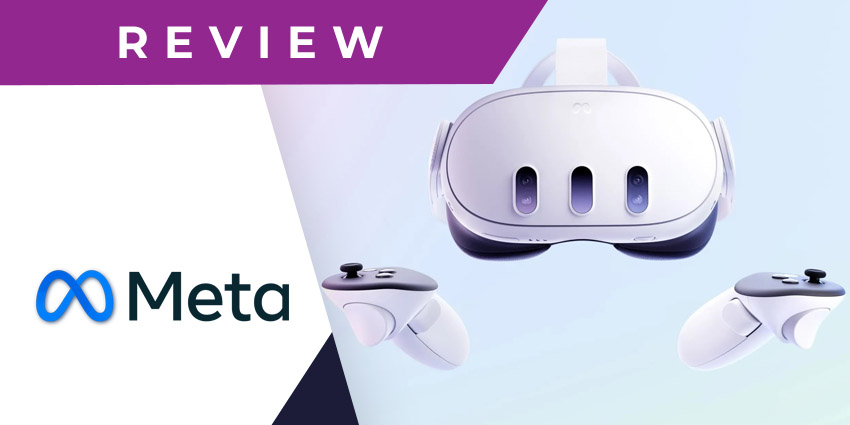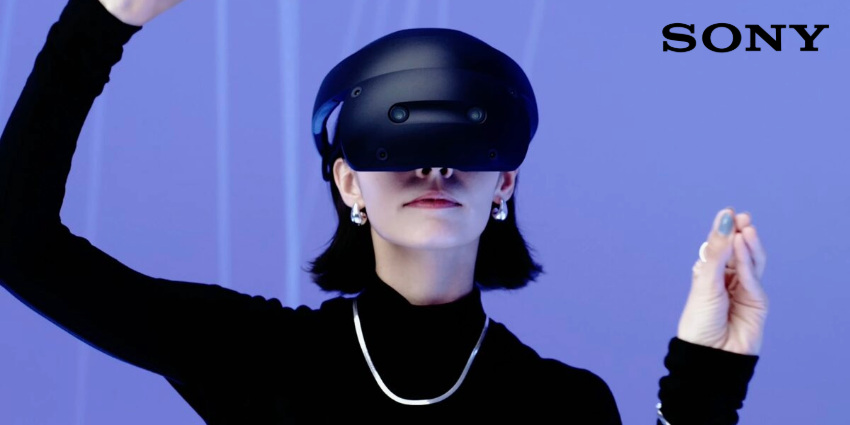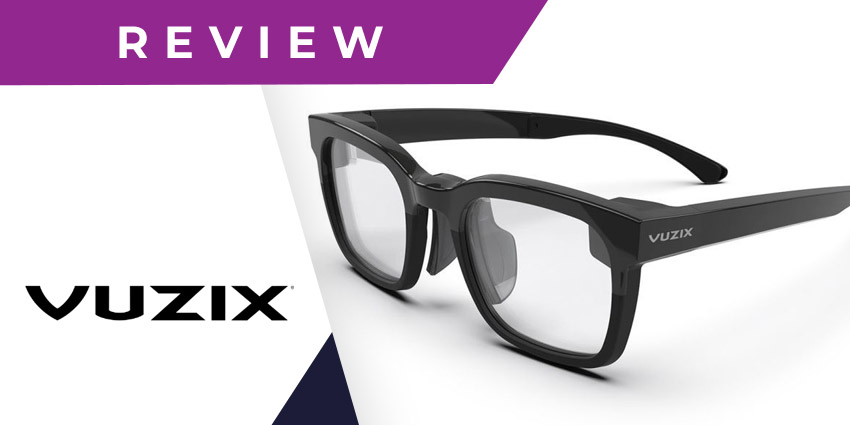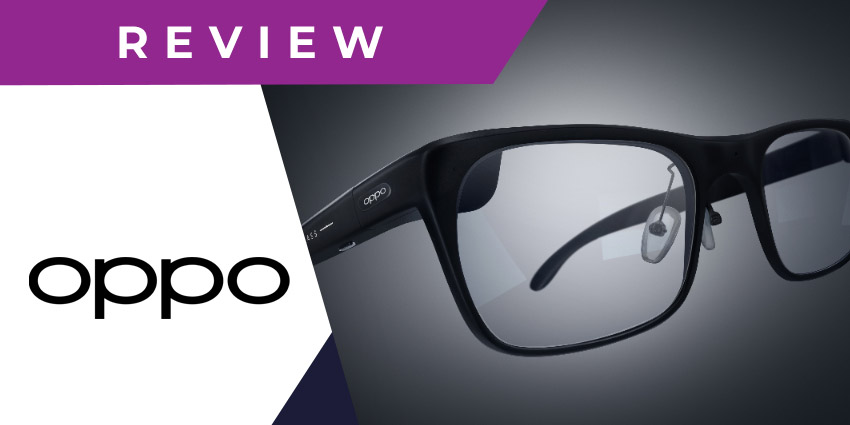I’ll be honest, I wasn’t as excited about conducting this Meta Quest 3S review as I probably should have been. After taking a deep-dive look at the major differences between the Quest 3, and the Quest 3S, I came to the conclusion that Meta’s new headset wasn’t really going to blow anyone away.
Now that I’ve had an opportunity to test the headset for myself, I can confirm that it’s not exactly revolutionary. There are no new features, (at least nothing that you won’t also get on the Quest 3). In fact, in a lot of ways the two devices are almost identical. They’ve got the same RAM and chipset (the Snapdragon XR2 Gen 2, with 8GB).
However – the Meta Quest 3S does serve a very important purpose. It’s helping Meta “democratize” access to extended reality, with a headset that’s arguably a lot better than the Quest 2, and a fraction of the price of most competing alternatives.
Here’s my honest review of the Meta Quest 3S headset, and why I still think it’s a worthwhile investment (for some people).
Quick Verdict: Pros and Cons
On a broad scale, the Meta Quest 3S isn’t much different from the original Meta Quest 3. Aside from having the same chipset and RAM, it also has the same controllers, access to the same apps, and the same “mixed reality” passthrough features. However, the specs have been trimmed back somewhat.
You get a slightly bulkier frame with the Quest 3S, a far less powerful display, and you’re limited to storage of 128GB or 256GB (instead of 512GB). Despite this, the Quest 3S is still a huge upgrade from the Quest 2, even though it shares a similar display. You get a faster processor, better pass-through cameras, and a decent battery life.
Ultimately, if you’re looking for the cheapest way to experiment with not just VR, but mixed reality too, then the Quest 3S is definitely a good pick.
Pros:
- Excellent processor
- Color pass-through cameras
- Decent refresh rate
- Access to countless apps and games
- Extremely affordable pricing
- Reliable controls
Cons:
- Slightly lackluster display
- Some tracking issues
- Bulkier design
Meta Quest 3S Review: Overview and Specs
If you’ve read any of my previous content covering the Meta Quest 3S, you’ll already know that it’s basically a VR headset somewhere between the Quest 2 (now over four years old), and the Quest 3. Like the Quest 2, pricing for the Quest 3S starts at $299.99, and the headset uses the same Fresnel display – popular among older VR headsets.
However, the Quest 3S also shares many of the most valuable features of the Quest 3, like the cutting-edge Snapdragon processor, color passthrough cameras, and improved RAM. After testing dozens of VR headsets, I can safely say there’s really no “cheaper” option out there that offers the same level of performance and functionality.
While the Quest 3 is probably worth the extra cash if you want a much shaper picture, the Quest 3S is the ultimate entry point option for XR in my opinion. It’s the perfect choice for budget-conscious consumers, or even businesses who want to kit their teams out for immersive collaboration.
Here’s an overview of the technical specifications:
- Display: One LCD display
- Lenses: Fresnel
- Resolution: 1832 x 1920 per eye
- Refresh rate: 120Hz
- FOV: 90 degrees vertical, 96 degrees horizontal
- RAM: 8GB
- Storage: 125GB or 256GB
- Chipset: Qualcomm Snapdragon XR2 Gen 2
- Battery life:5 hours (Average)
- Weight: 514g
Meta Quest 3S Review: Design and Comfort
As I mentioned at the start of this Meta Quest 3S review, there’s really not a lot of difference between the Quest 3S and the Quest 3 at a glance. The newer (more affordable) headset looks and feels exactly like most of the other headsets in Meta’s collection. You get the familiar white plastic shell. However, the Quest 3S has a flatter front plate than the Quest 3, and the cameras are placed differently.
The cameras on the Quest 3S are placed in two triangular clusters, with an IR emitter linked to each. The appearance is a little more “alien” in my opinion, but it’s not too wild. Like the Quest 3, the Quest 3S places its USB-C port, indicator LED, and power button on the left.
You also get the same memory foam padding, for a more comfortable wearing experience, as you do with the Quest 3. There’s even a similar Y-shaped elastic headband, which you can upgrade with the Elite Strap, or Elite Strap with the included battery pack.
Users can still also access prescription inserts for the Quest 3S. The big downside, however, is there’s no wheel to allow you to adjust the IPD settings precisely. You only get three positions to choose from. The inside of the headset is a little different too. Because the headset uses Fresnel lenses, the cavity around your eyes is a little deeper.
From a comfort perspective, wearing the Quest 3S is similar to wearing the Quest 3 – it even weighs almost exactly the same as its big brother. However, the overall design does feel a little chunkier, and the bulky elements did leave me worrying that the device would shift around on my face a bit more.
The Display and Pass-Through Experience
The display is where the Meta Quest 3S feels a lot more like the Quest 2 than the newer Quest 3. Meta chose the same Fresnel lenses it used in the previous device for the more affordable headset, to help keep costs low. Ultimately, pancake lenses do offer a better level of clarity than Fresnel lenses. Plus, it’s worth noting that the resolution of the Quest 3S is a fraction of that offered by the Quest 3.
The more expensive headset has a 2,064 x 2,208 pixel per eye resolution, compared to the 1,832 x 1920 resolution of the 3S. That might not feel like a huge change, but when it’s paired with a slightly lower field of view, and fewer “pixels per degree”, you do end up with a grainier image.
That being said, the display is still decent, particularly compared to some of the older, cheap headsets I’ve tried. Additionally, while what you see within the Quest 3S is similar to what you’d see with the Quest 2, what you can see through the headset is much better.
The Quest 3S replaces the Quest 2’s monochrome passthrough features with full color passthrough (the same as the Quest 3). You’ll be able to see your surroundings with decent clarity, although I still think you’ll need to take the headset off from time to time – such as when you’re reading small pieces of text. That’s simply because the camera resolution on the Quest 3S isn’t exactly perfect.
Other, more premium headsets, like the Apple Vision Pro, are definitely better from a mixed reality perspective, but, of course, the price tag is much higher. Additionally, it’s worth noting that the Quest 3S doesn’t have a depth sensor, which makes position tracking a little clunky at times.
Meta Quest 3S Review: Processor and Battery Life
As I’ve noted various times throughout this Meta Quest 3S review, the more affordable headset features the exact same chipset as the Quest 3. The Qualcomm Snapdragon XR2 chip ensures you should be able to access all of the features and apps you need on the Quest 3S with ease.
You also get a fantastic 8GB of RAM, although you will have less storage, with only 128GB and 256GB of the headset available. The storage isn’t expandable either, so you can’t “build on it” in the future if you start using your headset more regularly.
From a software perspective, you should technically have access to all of the same apps on the Horizon store for the Quest 3S as you would for the Quest 3. You can still use this headset for workplace tasks, creating things like “portals” which allows your avatar to move through various applications and virtual worlds.
You can also connect your Quest 3S to your computer to access SteamVR and other PC VR games. However, you will need to pay another $79.99 for a Meta Quest link cable. I actually think some apps perform a little better on the Quest 3S, with less latency – probably because the chipset doesn’t have to work as hard to render better graphics.
Another major plus of the Quest 3S over the Quest 3, is it has a slightly longer battery life. On average, Meta says the Quest 3 can last for up to 2.2 hours (although I’ve found it’s usually closer to 2 hours). The Quest 3S, on the other hand, as an average battery life of 2.5 hours. So if you’re diving into longer immersive collaboration sessions, the Quest 3S could be a good choice.
Controllers and Tracking Capabilities
The controllers you get with the Quest 3S are the same as those included with the Quest 3 – which I’ve noted before, are excellent. Meta’s controllers are simple, streamlined, and ergonomic, with conveniently placed buttons that make it easy to navigate through content.
Meta’s Quest Pro controllers are a little better in a few ways, offering access to built-in cameras for motion tracking and rechargeable batteries. However, if you’re looking for a straightforward experience, the Quest 3S’s controllers are absolutely fine.
Like many mixed reality headsets today, the Quest 3S also supports “hand tracking”, although there are no eye-tracking features. You’ll need to go through an initial setup process to ensure the headset’s cameras can recognize your hands, but from there, you can use gestures to control content instead of the physical controllers.
The gesture actions are the same as those you’d use on the Quest 3. For instance, you can pinch your index finger and thumb together to “click” on something. Unfortunately, the trackers are a little bit limited. If you can’t keep your hands steady, or the lighting in your room isn’t perfect, you can waste a lot of time just getting gesture controls to work.
Plus, it’s worth noting that while the Quest 3S supports hand tracking, not all of the apps on the app store will. You may still need to rely on controllers when using certain software.
Meta Quest 3S Review: The Verdict
Ultimately, the Meta Quest 3S doesn’t deliver the same high-quality mixed reality experience you’d get from more expensive headsets, like the Apple Vision Pro, or even the Meta Quest 3. However, it’s worth remembering that it’s really not supposed to.
Meta designed this headset to be the ultimate “entry level” device for those interested in experimenting with XR. In that regard, the device excels. It’s comfortable enough, easy to use, packed with processing power, and brimming with apps to choose from.
Sure, you won’t get the same visual quality you get from the Quest 3, or the same enhanced tracking capabilities, but you will get a very similar experience for a fraction of the price. I genuinely think this headset could revolutionize the XR space in its own way.
It won’t introduce us to anything particularly “new” in VR or MR, but it will allow more people to embrace the extended reality landscape. It could even allow for an increase in companies using virtual and mixed reality for training, product design, and collaboration.
By combining affordability with decent (if not perfect) performance, Meta has created a headset that has the power to accelerate XR adoption worldwide. If you’re new to the XR space, and want to get started with a budget-friendly headset – there’s no better option than the Quest 3S. If you’re looking for something more advanced, but still affordable, upgrade to the Quest 3.







